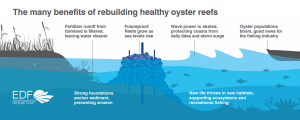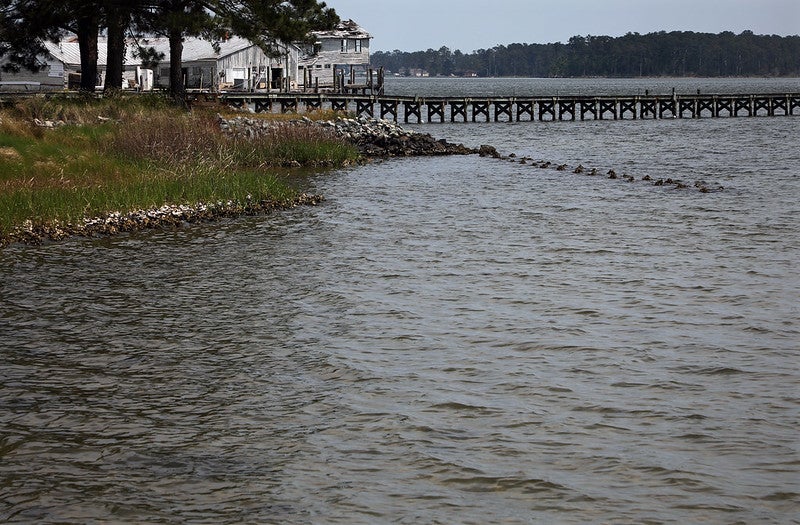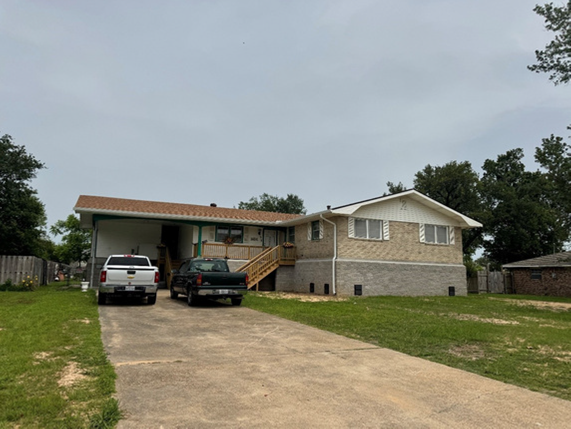
Looking to history to fix Louisiana’s land loss crisis
Tyler Ortego reaches over the side of his boat and grabs the top of a wooden stake that protrudes just above the waterline. Lifting it high, he reveals a dark cluster of what looks like small rocks, attached to the stake’s muddy end.
“Oysters,” he says and smiles.
Around him the bayous and brackish marshes of the Mississippi River Delta stretch out. Home to thousands of species of plants and animals, including countless migratory songbirds, these vast wetlands comprise a natural barrier protecting Louisiana’s fishing industry – the country’s second largest – and the city of New Orleans against hurricanes and flooding.
To an outsider, it might seem this world of quiet wetlands is unchanging. But it’s not. Since 1932, coastal Louisiana has lost an area the size of Delaware to the sea. Without intervention, a further 2,000-4,000 square miles will erode by 2050.
“This is a human-caused crisis,“ says EDF scientist Natalie Snider. “The construction of levees, canals and oil and gas infrastructure have fundamentally changed the topography of the Delta.”
Climate change, including rising sea levels and more intense storms, signal even greater challenges ahead.
Working with other nonprofits and the state of Louisiana, EDF is helping implement a $50 billion, 50-year state plan to protect the land. Projects include sediment diversion, the creation of new freshwater channels and the restoration of marshes, ridges and barrier islands.
A key component is the construction of oyster reefs.
“Oyster reefs anchor sediment and abate storm surge and wave power,” Snider explains. “They help protect delicate wetlands from the full erosive force of the sea.”
A coastal engineer by trade, Tyler Ortego has a plan. By planting just a few hundred bamboo stakes with ‘starter’ clutches of oysters attached, he anticipates he could grow a solid reef in just 2-3 years. Replicating this in strategic locations along the shore would protect more than 100 miles by 2020.
“By growing reefs where the marshes are most at risk we create protective barriers which grow and adapt as sea levels rise,” he explains.
https://www.youtube.com/watch?time_continue=107&v=5e1ZD9ybJUQ
Up until the late 1800s, a vast reef of oysters fringed up to 100 miles of Louisiana coastline. That reef’s demise, precipitated by the same factors that blight the coast, along with the mining of oyster shells for construction, has dealt the coastline a devastating blow.
“Oyster reef reconstruction uses nature’s own power to restore the land’s natural defenses and protect communities along the Delta,” says Snider.
How oyster reefs are helping increase resilience in coastal Louisiana Share on XToday, reef construction projects are underway up and down the coast from Florida to New York.
As for Ortego, his first reef will be planted in the Barataria Basin this summer. After that, he faces the challenge of scale. “This problem is too big for state money,” he says. “We need to unlock private capital to help save our land.”
One plan envisages the reefs becoming part of Louisiana’s thriving oyster farm economy. Another vastly reduces costs by 3D printing the concrete blocks on which the reefs thrive.
Solve that puzzle and the sky, or at least the seabed, is the limit.
“Coastal engineering is my career,” Ortego says. “But helping save Louisiana will be my opus.”












